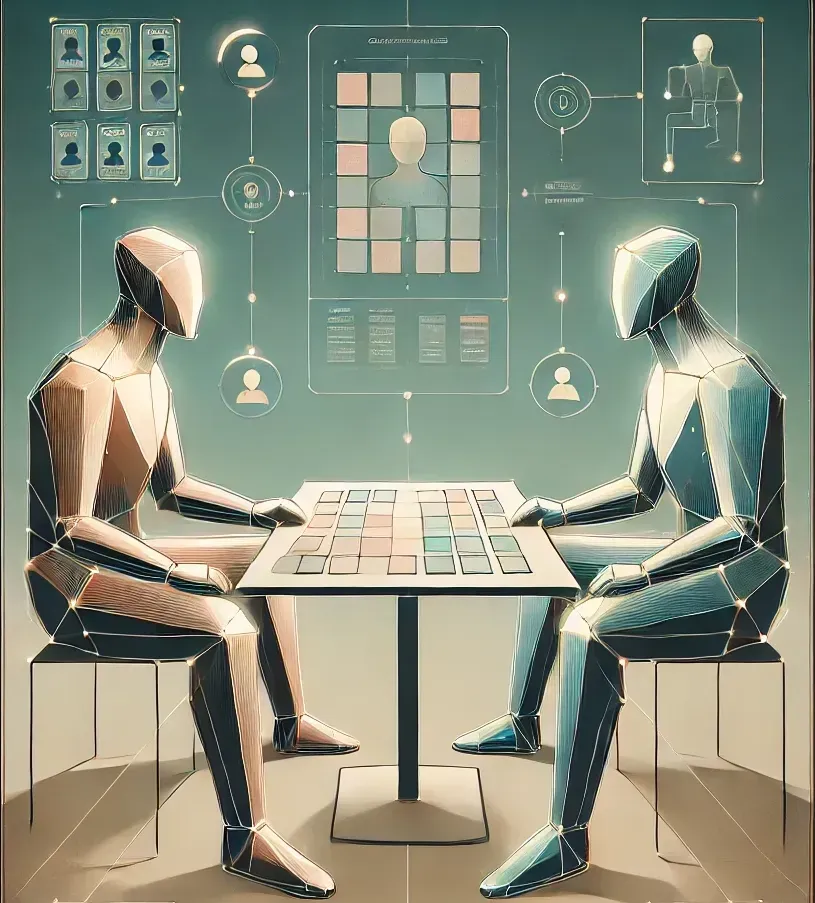A Mini Multi-Agent Competition Among Three Different LLM Agents
This article was originally posted on Art Fish Intelligence.
When it comes to playing games, large language models (LLMs) aren’t just about providing witty remarks or answering trivia. They’ve branched out into the world of gaming, demonstrating incredible skills in various formats—from Minecraft to Chess, and more recently, murder mystery games and the NYT Connections puzzle. Curious about their gaming prowess? A comprehensive survey has detailed all the different ways LLMs are showing off their skills. But today, let’s dive into a more intriguing question: How do LLMs perform when they’re up against each other?
Enter the Competition: Codenames and LLMs
In this exploration, we’re focusing on three different LLMs battling it out in the popular board game Codenames, a game that challenges players to connect the dots between seemingly unrelated words—a true test of strategic thinking and teamwork.
For those who might not be acquainted with Codenames, it’s a thrilling board game devised by Vladimír Chvátil. The gameplay pits two teams, typically known as Red and Blue, against one another in a contest of wit and wordplay. Each team has a spymaster who offers single-word clues designed to hint at multiple words located on a 5×5 grid filled with random words. Team members must use the clues to guess their designated words while skillfully avoiding the opposing team’s words.
The Match-Up: Three Different LLMs
Imagine a digital arena where these LLMs strategize just like real players. Each model has its unique approach, dissecting clues and reasoning out their guesses. As I observed their competition, it became clear how each agent leveraged its strengths differently. The first LLM excelled at connecting words with strong contextual relationships, while another thrived on abstract associations. The third model surprised everyone with its humor-infused interpretations—transforming the game into a witty exchange that kept all virtual spectators entertained.
The excitement of watching these LLMs adapt to one another’s strategies added a layer of unpredictability to the gameplay. For instance, when one LLM gave a cryptic clue that led the others down the wrong path, it was fascinating to see how the opposing models recalibrated their thought processes in real-time, trying to discern the spymaster’s intent amidst the misdirection.
Lessons Learned: Insights from the Competition
What can we glean from this mini-competition? First and foremost, it demonstrates that LLMs can engage in complex social interactions like humans, even in a game format. Their ability to think creatively and adapt to new information is a testament to the evolving capabilities of AI.
Moreover, this scenario raises exciting implications for using AI in education and collaborative projects. Imagine students using AI as teamwork partners, sparking debates and enhancing their analytical skills through engaging games. Additionally, it begs the question of how we can ensure healthy competition among AI agents in varied environments—be it for fun or serious tasks.
Conclusion: The Future of LLMs in Gaming
This exploration of three competing LLMs showcases not just their gaming aptitude but also hints at a future where AI can become more interactive and dynamic in human-like settings. The developments we’re witnessing today are just the beginning, and it’s exhilarating to envision where this technology will take us.
The AI Buzz Hub team is excited to see where these breakthroughs take us. Want to stay in the loop on all things AI? Subscribe to our newsletter or share this article with your fellow enthusiasts.




